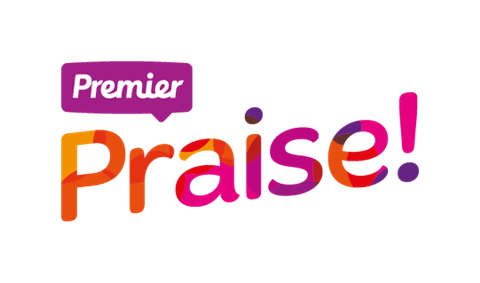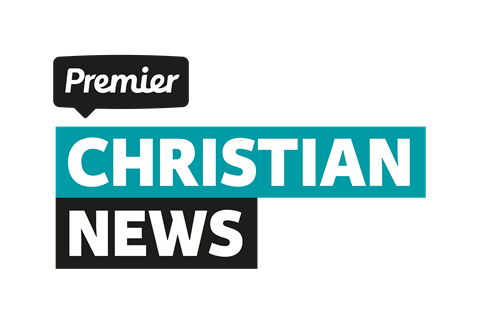Pick of the month
Parenting children for a life of confidence
Rachel Turner (4 out of 5)
BRF
Rachel Turner is a family life pastor, an international speaker on children, young people and family work, and a mum. This is the third parenting book she’s written and her heart is so clearly to root children in the love of Jesus.
With passion and humour, Rachel gives practical tips for helping children access God’s love. She breaks it down into teaching them to first see God’s love, how to understand it, then how to encounter God’s love personally. We’re reminded again and again that we are God’s creation, able to be part of his plans, and not finished yet. This idea of being part of an ongoing construction project takes the pressure off being perfect and focuses attention on a loving God.
This book helps parents consider how to ground their children in the Bible so they have unshakeable access to the truth and a vibrant and joy-filled relationship with God. If we’ve got this sorted, we’ll be able to navigate our children through our culture which constantly bombards them with negative and unrealistic images and ideas every day. Covering various issues that can cripple confidence, such as fear of failure, body image, comparisons and the media, Rachel demonstrates how to spot lies and replace them with God’s truths. I love the reminder that God can do more from the inside of children’s lives than we can do from the outside.
While many parenting books and courses are about managing behaviour, this book is about nurturing a heart. We’re encouraged us to dig deeper with our children, not just to understand a problem they present, but what their heart is feeling. Once we have access to the heart and can understand it, we can begin to shape it.
Rachel’s wealth of experience both as a mum and a children’s worker is apparent as she talks about how being loved by God gives us peace. She reminds us that teaching children to experience and accept this love rather than desperately seeking affirmation elsewhere is how they will lead a life of confidence.
I’m not sure that focusing on child’s confidence is necessarily the biggest priority, rather releasing children to live in God’s strength is. This is a practical guide to doing exactly that. You don’t need to be super mum or the world’s best children’s worker – rather someone willing to dig deep, listen and share your faith.
Gen Rylett is a mum of three and volunteer children’s worker at Holy Trinity Barnes
The spiritual child
Lisa Miller (4 out of 5)
St Martin’s Press
This aim of this book is to propose that spirituality is an innate and essential aspect of human life and to support adults involved in children’s services. Drawing on research in neuroscience, the author presents findings that support her thesis but, as a mother of two, she also offers observations about spirituality from real life.
A significant aspect of the text is the correlation of spiritual well-being with positive mental health and Miller cites studies that indicate how cases of drug dependency, depression and eating disorders are less evident in contexts where a spiritual dimension is acknowledged. This dimension might include an intergenerational community, an awareness of transcendence, or engagement with the sacred. She also describes the significance of acknowledging children’s spirituality, and urges adults to ‘give the nod’ to children, listen to them and accompany them as they make sense of their world.
Since Miller’s rhetoric of spirituality is not limited to the Christian, the material is widely accessible. However, the definition of ‘child’ often pertains more to the adolescent than the child under 11; furthermore the book is a lengthy read. Nevertheless its success lies in its use of science to support theology and as links can easily be made with Christian work: I would recommend it to any church-based children’s worker.
Ruth Wills is the secretary of the International Association for Children’s Spirituality and a foster carer
Comic book hero Bible
Siku, Richard Thomas and Jeff Anderson (4 out of 5)
Lion
The Comic book hero Bible, is an amazing book starting with an introduction to who the Bible’s heroes are. The book gives all Bible heroes really cool superhero names like Noah as Rainman, and Satan as The Accuser.
The book itself was a great read, and I enjoyed going through the different stories. The authors and illustrators were clever because they made all the bad guys seem like monsters. Goliath for instance, was a ravaging beast who was ginormous! The illustrations are extremely detailed and the illustrators have immense skill. Something I noticed about the book is that one illustrator does the Old Testament and a different illustrator does the New Testament. This is good because it gives you two perspectives.
This Bible really portrays what all the Bible stories are about, but adds a bit of comic-book adventure. Someone who isn’t a Christian may think that it was a normal comic book. This is good because it may lead them to become a Christian: thinking that the Bible is fun and cool.
The only downside to this book is that it can be bit dark in imagery and shows graphically stories of murder and massacre. This could be a little bit scary for younger children and could possibly give them nightmares. The Comic book hero Bible was created by three very talented authors / illustrators called Siku, Richard Thomas and Jeff Anderson. Even though parts of it can be a bit gory, it is overall a brilliant version of the Bible. I would recommend this book to children aged ten and above.
Elijah Kinsley is 12 years old
The big pig stampede
Bob Hartman (4 out of 5)
Tyndale
Em: This is a great story linking together Jesus’ miracles, told through the perspective of a boy named Gideon, making it accessible for a younger audience. Amy and I read the book separately but it would also work read aloud at home or using a chapter for storytelling with children’s groups (probably upper primary age). I like the fact that it doesn’t neatly tie things up and make conclusions for the reader but presents questions to think about. It’s a reasonable price for a hardback book and would make a lovely gift: we’ve enjoyed it and would recommend it.
Amy: I like reading this book because it is very kid-readable and it is very good. I also like that there are speech bubbles as well as pictures. I find them interesting and helpful because you can just read the bubbles and then you have an idea of what happens. I also liked reading it because miracles are very well fitted into the rest of the story and each chapter is a new miracle. My favourite chapter was the bread and fish one because it was the most interesting.
Em Rogerson is an experienced children’s and youth worker and is mum to nine year-old Amy and her little brother Joe.
The garden, the curtain and the cross
Carl Laferton andCatalina Echeverri (3 out of 5)
The Good Book Company
I’ve never tried to discuss salvation with my pre-schooler. She doesn’t yet know what death means and has only a hazy grasp of the difference between minutes, days and years. But these comprehension issues didn’t stop her enjoying The garden, the curtain and the cross.
The book is packed with engaging illustrations and gives a whistle-stop tour through tricky concepts: from original sin and God living behind a curtain in the Temple (‘Why did he tear the curtain mummy? Was he naughty?’), to crucifixion and penal substitution. Given that there are fewer than 1,000 words in the whole book, it’s an impressive feat.
The illustrations provide plenty to talk about – with symbolism for older children and animals and angels for the younger. The book is perhaps most appropriate for children in the upper end of primary education. It gives the story arc of the gospel, rooted firmly in the Judaic tradition, and might suit a child who is beginning to ask the difficult questions about sin, and why Jesus had to die.
Anne Phipps works in the charity sector and lives in London with her daughter and a lot of books


























